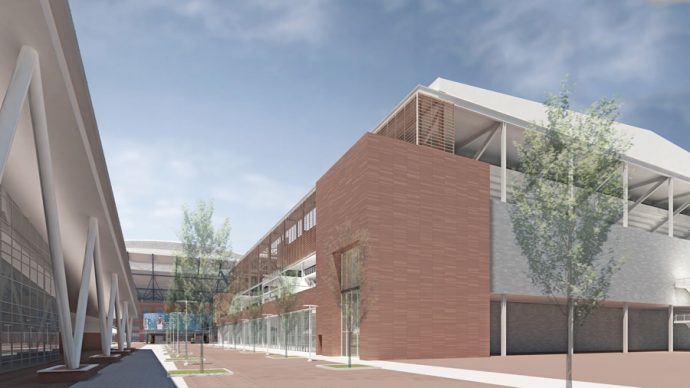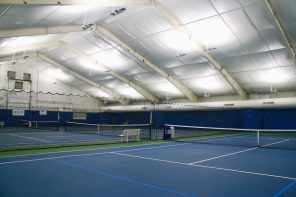The new “Louie” — as in the new Louis Armstrong Stadium — is set to make an instant impression on tennis fans when the US Open begins Aug. 27.
“The majority of fans come in the East Gate,” Danny Zausner says. “The Louie Armstrong Stadium is at the East Gate. So we anticipate an immediate ‘wow.’”
As COO of the Billie Jean King USTA National Tennis Center, Zausner has overseen “the seven-year labor of love” that is the more than $600 million transformation of the center, in Flushing Meadows-Corona Park, Queens, on the site of the 1939 and 1964 World’s Fairs grounds. In the Roaring ’20s, it figured as the ash heap that served as a pivotal setting and resonant metaphor in F. Scott Fitzgerald’s “The Great Gatsby.”
The 14,000-seat Louie — the number two arena at the center after Arthur Ashe Stadium — will be a delight for fans, players, reporters and shoppers alike, Zausner says. It occupies the footprint of the old Louie plus half of the Grandstand Stadium, which has moved to the southwest part of the campus. So the new Louie is wider than the old one, which makes it roomier.
“There are nice big concourses on two levels so it’s comfortable,” Zausner adds. And tennis-fashionable: Walking along the East Plaza, fans will notice the stadium’s glass wall with Adidas, Polo Ralph Lauren, Wilson and US Open Collection storefronts.
“There will be a little competition no doubt to have the best storefront,” he says. The four will be among the seven retail locations. There will be 14 concession stands as well.
But while the new Louie is roomier, it’s also more intimate, a plus for the players, “who feed off the fan energy.” For them, there are new warm-up areas and a lounge space in which to hang out before their matches.
Everyone, Zausner adds, will benefit from the retractable roof. Unlike the Arthur Ashe, where the roof cocoons the stadium as a later addition, a roof was always part of the design for the new Louie. Still, would there be the money for the roof or would that have to be a later piece of the puzzle? Fortunately, the revamp has come in on budget, Zausner says, and fans can expect to stay nice and dry, as it takes only about six minutes to close the roof.
He calls the creation of the two roofs “a nice family story” as they were created by ROSSETTI, an architectural firm out of Detroit begun by Gino Rossetti and now run by son Matt.
There’s an equally nice story behind the history of the Louie and its name. The old Louis Armstrong and Grandstand stadiums were carved out of the Singer Bowl, built by the Singer Sewing Machine Co. and donated to the 1964 World’s Fair. The Bowl subsequently featured some of the biggest headliners in rock and boxing, including The Doors, Jimi Hendrix, Janis Joplin and heavyweight champion Floyd Patterson. In 1973, the stadium was renamed for Louis Armstrong, the beloved jazzman (1901-71) who lived in nearby Corona at 34-56 107th Street (between 34th and 37th avenues). (The house is now the Louis Armstrong House Museum, a U.S. landmark.)
When the United States Tennis Association moved to the stadium’s site in 1978, it did so with the proviso that it would keep the name Louis Armstrong Stadium — which it has.
And now the great performer’s namesake is ready for its closeup on the world stage.
For more, visit usopen.org.





